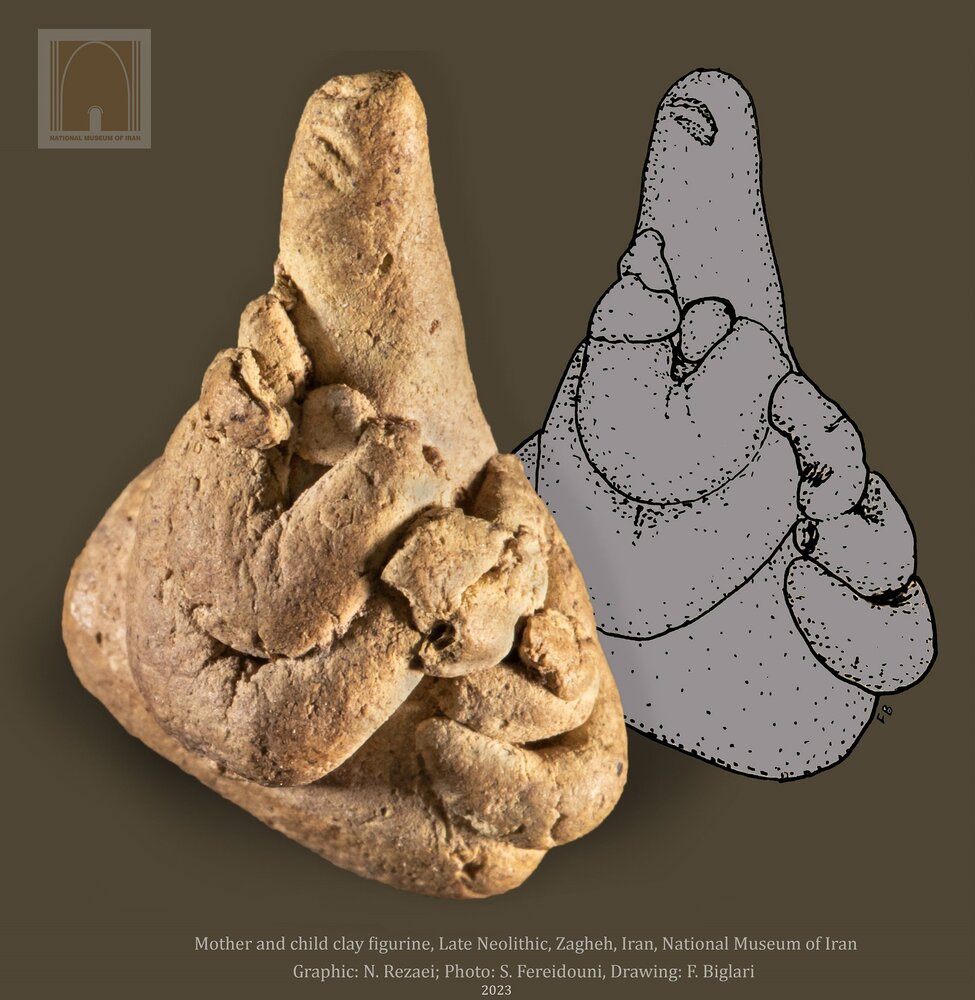Tehran museum exhibits 7,000-year-old mother and child figurine to mark Women's Day

TEHRAN – On the occasion of National Women’s Day, the National Museum of Iran has put on show a 7,000-year-old clay figurine of a mother hugging her child.
Found in the late Neolithic site of Zagheh at the northwestern periphery of central Iran. According to organizers, the 7,000 years old figurine is the earliest representation of a mother and child discovered in Iran.
“This figure is the only discovered example of Iranian prehistoric art that shows a mother with a child in her arms,” the director of the prestigious museum told visitors during the opening ceremony held on Wednesday.
Coinciding with Women's Day, the National Museum of Iran decided to expose one of the most important and unique works of its treasure in the form of a single exhibition, Jebrael Nokandeh stated.
Archaeologists have unearthed this figurine from an engraved building called Niayeshgah (“Place of Worship”, which is about seven thousand years old, in Tepe Zagheh of the Qazvin plain.
“It is made of baked clay and shows a mother with a child in her arms. The mother's head is elongated and almost cone-shaped, and her eyes are represented by several grooves. The child was made separately from shot clay and added to the body,” Nokandeh explained.
“This figure is the only discovered example of Iranian prehistoric art that shows a mother with a child in her arms.”
The sculptor has shown the child in the mother's arms so artistically that despite its small size, it evokes a mother's emotional feeling towards her child to the viewer, and perhaps to emphasize this issue, the artist creatively crossed the border of naturalism by showing this mother with four hands, he said.
This very small ancient historical work tells the story of more than seven thousand years of Iran's rich culture and civilization, Nokandeh said.

The exhibition will be running through January 20, he said.
Situated in the Sagzabad district of Boueen Zahra county in Qazvin province, c. 60 km south of Qazvin city and 140 km west of Tehran, Tepe Zagheh is one of the key sites of the transitional period from Neolithic to Chalcolithic in the Qazvin plain.
The settlement at Zagheh existed for a considerable amount of time, roughly nine hundred years, from 5200 to 4400 or 4300 BC, according to absolute and relative chronology.
Nearly three thousand years had passed by this point, during which the village had been established and agriculture had advanced since tokens had become known and recognized and had started to be used in the system of reckoning and accounting.
Evidence from numerous excavations and interdisciplinary studies suggests that Zagheh had a ranked society where social stratification was institutionalized and that the society was in the Chalcolithic to Neolithic transitional period.
The Neolithic, also called the New Stone Age, is the final stage of cultural evolution or technological development among prehistoric humans. It was characterized by stone tools shaped by polishing or grinding, dependence on domesticated plants or animals, settlement in permanent villages, and the appearance of such crafts as pottery and weaving. The Neolithic followed the Paleolithic Period, or the age of chipped-stone tools, and preceded the Bronze Age, or the early period of metal tools.
AFM
Leave a Comment